When you explore the history of French Connection, you'll discover it began in 1972, founded by Stephen Marks, with a primary focus on women's fashion. By 1976, the brand had expanded into menswear and garnered significant attention after going public in 1984. In the late 1990s, French Connection made waves in the industry with its edgy slogan, which challenged traditional advertising conventions. Despite facing financial hurdles in the 2010s, the brand remained a notable presence in the fashion world, blending modern designs with cultural commentary. This journey highlights the evolution of French Connection and its cultural significance, inviting you to delve deeper into its impact on trends and society.
Overview of French Connection
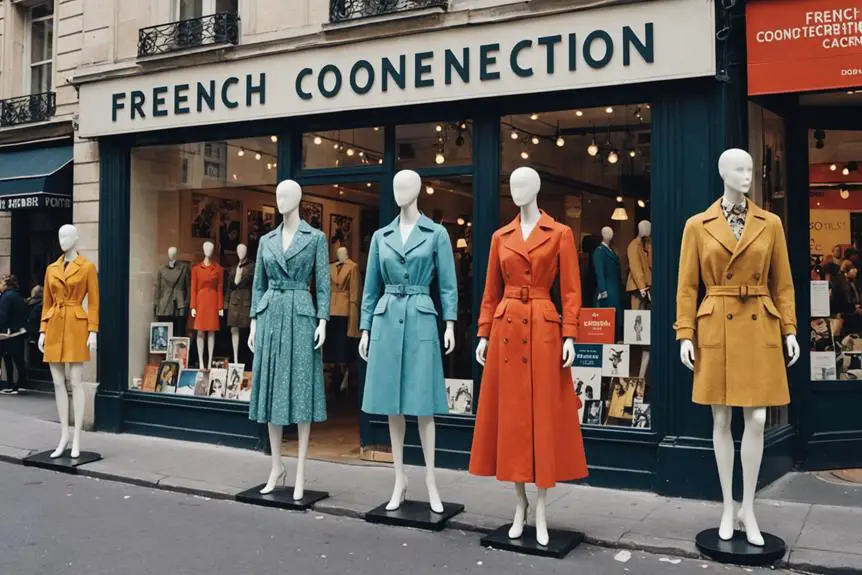
Founded in 1972 by Stephen Marks, French Connection emerged as a pivotal player in the fashion industry, particularly in the UK. Initially focused on mid-market women's fashion, it quickly broadened its scope to include menswear in 1976. This expansion laid the groundwork for a diverse product range that now encompasses clothing, accessories, home goods, and licensed products, such as toiletries and fragrances.
In 1984, French Connection went public on the London Stock Exchange, amplifying its visibility and market presence. One of the brand's most defining moments came in the late 1990s with the introduction of the controversial slogan. This edgy marketing strategy not only captured attention but also solidified French Connection's place in popular culture, showcasing its willingness to push boundaries.
Despite facing financial challenges in the 2010s, French Connection has retained its status as a well-known name in fashion. Its unique blend of contemporary style and community engagement continues to resonate with consumers, demonstrating the brand's resilience and adaptability in a constantly evolving industry. As you explore French Connection's history, you'll see how its journey reflects broader trends in fashion and marketing.
Historical Context: 1930s-1950s
As the world grappled with the aftermath of the Great Depression and the tumult of World War II, a darker undercurrent began to shape the fabric of society in France and beyond—namely, the rise of the French Connection heroin smuggling scheme. Established routes from Indochina through Turkey to France became essential for transporting heroin to the U.S. and Canada. In 1937, the first illegal heroin labs emerged in Marseille, operated by Corsican trafficker Paul Carbone. This marked the beginning of a sustained network of heroin production and distribution.
Trafficking Expansion in the 1960s
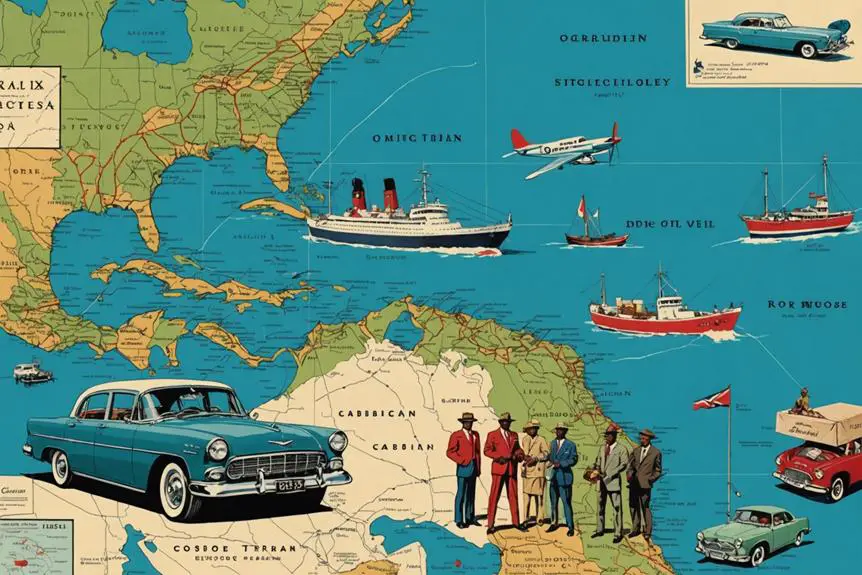
The escalation of heroin trafficking in the 1960s marked a pivotal chapter in the dark narrative of the French Connection. During this decade, Corsican traffickers became the primary suppliers, moving an estimated 80% of the heroin entering the United States. The scale of operations was staggering, with 2,600 to 5,000 pounds of heroin smuggled annually by 1960. As demand soared, the illicit network expanded, drawing in various international figures, including diplomats.
Key points about this era include:
- Corsican traffickers' dominance in the heroin market.
- A significant seizure in 1968 of 246 pounds hidden in a Citroën DS on the SS France.
- Diplomat Mauricio Rosal's involvement, showcasing the international ties in smuggling.
- Jean Jehan's rise as a kingpin, orchestrating major deals without facing arrest.
- U.S. negotiations with Turkey to curb opium production due to rising heroin demand.
This period not only reflects the increasing sophistication of trafficking operations but also the urgent need for law enforcement to combat the growing heroin crisis. The implications were profound, shaping future anti-drug policies and further entrenching the complexities of the illegal drug trade.
Key Figures and Their Influence
While the French Connection's operations thrived, a few key figures emerged who wielded tremendous influence over the heroin trafficking landscape. Corsicans like Antoine Guérini, Paul Carbone, and François Spirito were pivotal in establishing and expanding the network during the 1930s. Their efforts laid the groundwork for a thriving heroin trade that peaked in the 1960s, with Corsican traffickers supplying around 80% of the heroin in the U.S.
Jean Jehan, a notorious kingpin from the 1950s to 1960s, became synonymous with significant heroin deals. His ability to evade law enforcement throughout his life, despite his high-profile status, underscores the complexities of organized crime. Key players like Auguste Ricord and Salvatore Greco were also instrumental, sourcing raw opium from Indochina and Turkey, which fed the insatiable U.S. market.
However, the intertwining of organized crime and corruption within law enforcement, exemplified by collusion among NYPD officers and mobster Vincent Papa, complicated efforts to dismantle this vast trafficking operation. The impact of these key figures shaped the heroin landscape, highlighting how individual actions can reverberate through entire criminal networks.
Dismantling the Operation in the 1970s

During the early 1970s, a concerted effort emerged among international law enforcement agencies to dismantle the French Connection's heroin trafficking networks, fundamentally altering the landscape of drug trade in the U.S. and Europe. The Turkish government's 1971 ban on opium poppy cultivation severely impacted the heroin supply chain, creating a critical juncture for law enforcement actions against Corsican traffickers.
You'd see a surge in coordinated operations targeting these networks, resulting in notable achievements:
- Significant drug seizures marked the decline of heroin availability.
- A record 915 pounds (415kg) of heroin was confiscated from a shrimp boat by French authorities in February 1972.
- Drug arrests in France skyrocketed from 57 in 1970 to 3,016 in 1972.
- Enhanced international cooperation among law enforcement agencies intensified the crackdown.
- The Corsican heroin trafficking operations faced unprecedented pressure.
These efforts collectively dismantled the French Connection, leading to a marked decrease in heroin on U.S. streets. The 1970s represented a pivotal moment in the fight against drug trafficking, showcasing how collaborative law enforcement strategies can reshape entire industries.
Major Drug Seizures and Arrests
Significant drug seizures and arrests in the early 1970s marked a turning point in the battle against the French Connection's heroin trafficking networks. On January 4, 1972, you'd see French authorities seize 110 pounds of heroin at Paris airport, a clear signal that the fight was intensifying. Just weeks later, a major investigation unfolded, leading to the arrest of five individuals in New York and two in Paris, culminating in a staggering seizure of 264 pounds of heroin valued at $50 million.
The scale of trafficking operations became even more evident when, on February 29, 1972, officials seized 915 pounds of heroin from a shrimp boat. This series of significant seizures and arrests highlighted the authorities' commitment to dismantling these networks. By the end of 1972, drug arrests in France skyrocketed from 57 in 1970 to over 3,000, with six major heroin laboratories dismantled in Marseille in collaboration with the U.S. DEA. Each operation not only disrupted trafficking channels but also sent a strong message that the international effort against heroin smuggling was gaining momentum, reshaping the landscape of drug enforcement.
Impact of Corruption on Trafficking
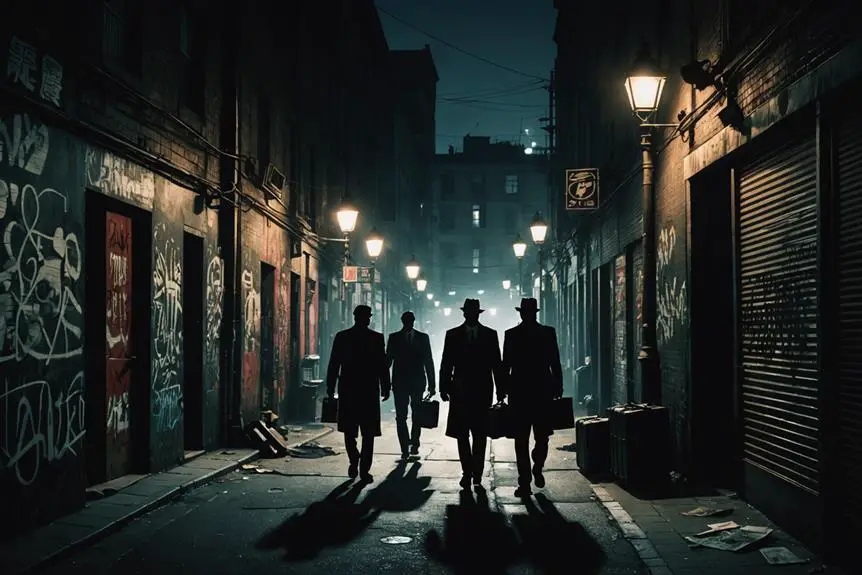
The escalating efforts to combat the French Connection's heroin trafficking were often undermined by deep-seated corruption within law enforcement agencies. Corruption became a critical facilitator of organized crime, with narcotics officers allowing access to evidence storage containing seized heroin. This betrayal led to an estimated street value of stolen drugs reaching about $70 million.
Consider the implications of such corruption:
- Facilitated trafficking: Corrupt officers enabled smoother operations for drug dealers.
- Undermined trust: Public confidence in law enforcement eroded.
- Violence escalated: Competition within drug networks, such as the Guérini clan, led to brutal internal conflicts.
- Mobster influence: Figures like Vincent Papa showcased the intertwining of organized crime and corruption.
- Operational reach: Trafficking operations spanned from Marseille to New York, illustrating how corruption extended beyond borders.
The exposure of such corruption, highlighted by the bizarre incident of insects consuming bags of heroin, ultimately led to the arrest of key players. However, this only underscored the violent and chaotic landscape that corruption bred in the world of heroin trafficking.
Legacy of the French Connection
The enduring legacy of the French Connection deeply impacts contemporary drug policy and law enforcement strategies in the United States. This heroin trafficking scheme, which once supplied about 80% of the heroin in the U.S. by 1969, highlighted the pervasive nature of organized crime. Key figures, like Corsican Jean Jehan, managed operations that thrived in the shadows, illustrating the complexities of drug networks that evade law enforcement for years.
The dismantling of the French Connection in the 1970s, particularly following the Turkish government's ban on opium cultivation, marked a pivotal moment that reshaped heroin trafficking patterns. Major drug seizures surged during this period, including a record 915 pounds captured by French authorities in February 1972, underscoring the extensive reach and influence of the operation.
Today, the legacy of the French Connection informs ongoing research into drug policy, emphasizing the need for thorough strategies to combat evolving organized crime dynamics. As you reflect on this historical context, consider how the lessons learned from the French Connection continue to shape responses to drug trafficking issues in modern society, fostering a deeper understanding of public health implications and enforcement challenges.
Cultural Significance and Modern References

While the legacy of the French Connection in drug trafficking has shaped policies and law enforcement, a different kind of French Connection emerged in the fashion industry that reflects cultural evolution. French Connection has carved out a unique niche with its edgy branding and the controversial slogan, igniting debates about provocative fashion marketing. The brand's evolution, marked by distinct logo changes and tag designs, showcases its adaptability in a dynamic fashion landscape, making it essential for enthusiasts to recognize the evolution of tags in identifying authentic vintage pieces.
The brand's cultural significance is evident through several key elements:
- Edgy Branding: The slogan challenged conventional advertising norms.
- 90s Influence: Campaigns like fcfashion humorously addressed societal standards.
- Modern Design: Their designs often capture global trends, appealing to diverse tastes.
- Community Engagement: Collaborations with artists and cultural events strengthen their brand presence.
- Social Commentary: French Connection's approach merges fashion with relevant social issues.
These elements position French Connection as a pioneer in the retail industry, creating a reference point for discussions on branding strategies. Its legacy lies not just in the clothes it produces, but in how it boldly navigates the intersection of fashion and culture, continually reshaping perceptions and inspiring modern references in style and marketing.
Frequently Asked Questions
What Is the French Connection Famous For?
You'll find that French Connection's fame stems from its edgy branding and provocative marketing, particularly the controversial abbreviation. Their signature dresses and responsible denim further solidify their position in contemporary fashion culture.
Who Invented French Connection?
You might be surprised to learn that Stephen Marks invented French Connection in 1972. His vision focused on creating distinctive women's clothing, which eventually blossomed into a renowned global fashion brand with diverse offerings.
Is French Connection a High-End Brand?
No, French Connection isn't a high-end brand. It's positioned in the mid-market, offering stylish, contemporary fashion at more accessible prices, making it a popular choice for those seeking trendy options without luxury costs.
What Happened to the French Connection Brand?
French Connection faced financial struggles, sold its Nicole Farhi brand, and was acquired by MIP Holdings. Despite fluctuations in sales and share prices, it's attempted to diversify its offerings amidst fierce market competition.
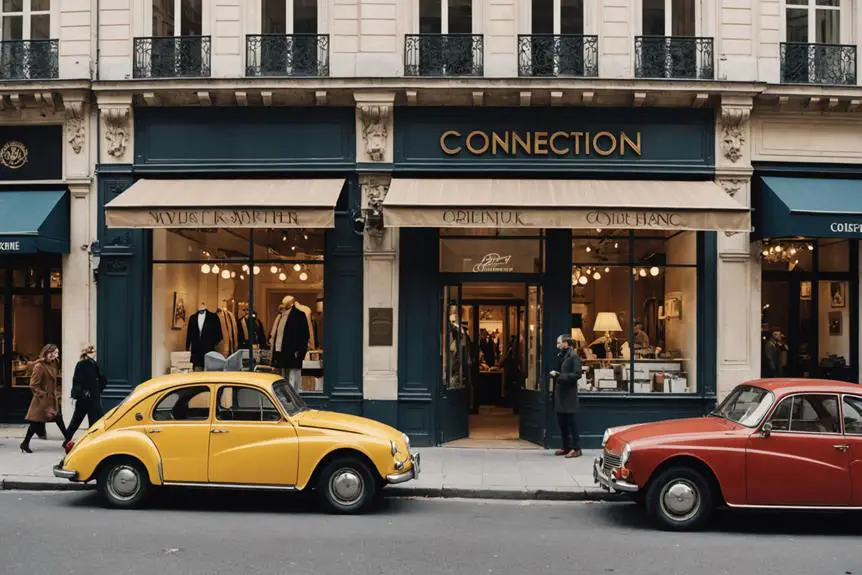



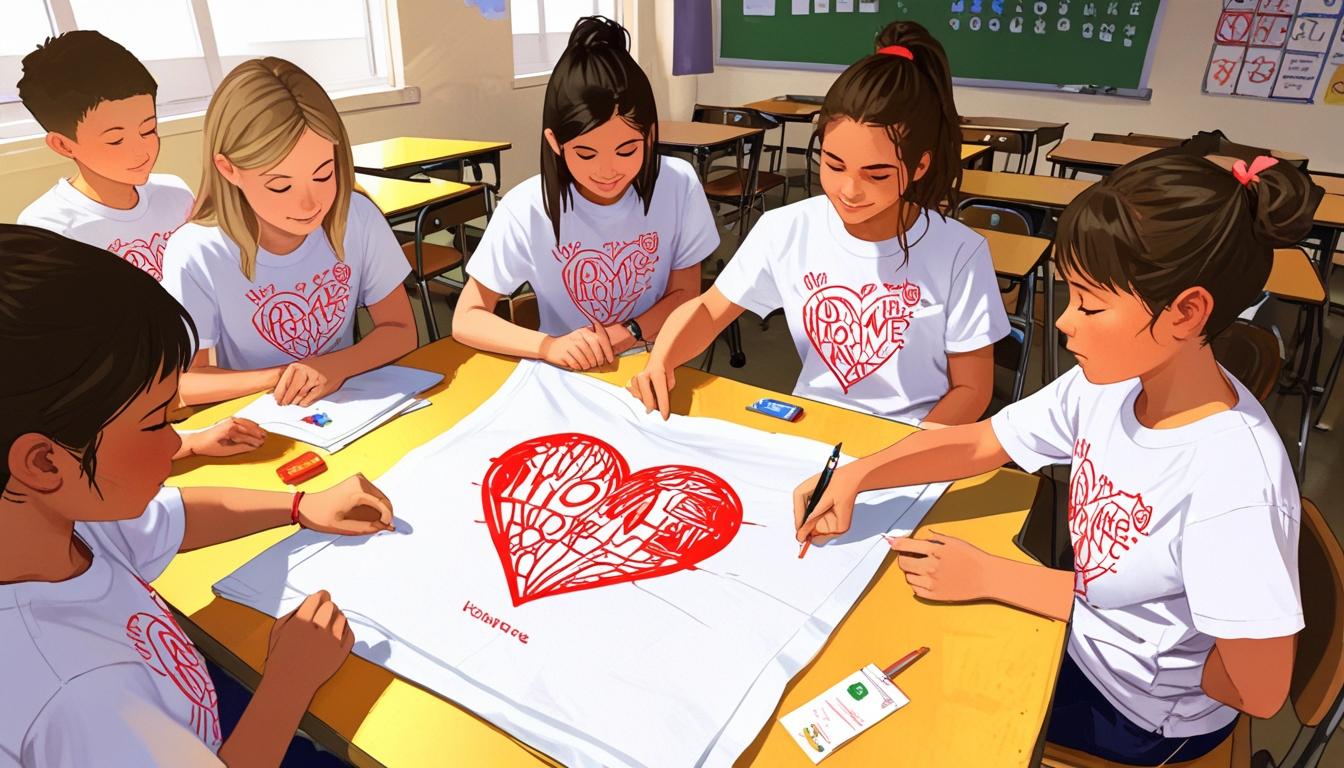
Dear Sir/Ma,
Hope this finds youy well.
We are interested in procuring the following goods from your company and would appreciate your confirmation of availability.
Kindly review the details and provide us with information on the next steps regarding order processing, delivery arrangements and payment terms.
Looking forward to your prompt response to proceed accordingly.
Hello,
for your website do be displayed in searches your domain needs to be indexed in the Google Search Index.
To add your domain to Google Search Index now, please visit
https://SearchRegister.info/
Hello vintageclothingguides.com,
Is your lead generation falling short, and is your website traffic lacking?
Should I send over more in-depth solutions for you to review?
Well wishes,
Lucy Gordon | Digital Marketing Manager
Note: – If you’re not Interested in our Services, send us “opt-out”
Hello, Things are rough for many businesses right now, which is why I’m offering a one-time, no-strings-attached outreach blast to 50,000 contact forms, completely free. It’s the exact same system I use for my paying clients to get fast lead generation, and I’m offering it at no cost to help you stay visible. Want to claim your free spot? Simply head to https://free50ksubmissionsoffer.my and I’ll take care of everything for you. No cost, no commitment. Just an opportunity to help you get noticed in tough times.
Dear Vintageclothingguides,
I hope this message finds you well. I am reaching out to inquire about your company’s current capacity availability, as we have an upcoming project slated to commence in the second half of the year. We would appreciate it if you could provide a quotation for your services to help us proceed with planning.
Looking forward to your feedback.
Best regards,
Matt Papenfus
Managing Director
Turnerconstuction.com
Are you ready to earn money from your website with minimal effort? ?? With ForeMedia.net, you can start making revenue from ad impressions alone—clicks are just a bonus!
Here’s why website owners love us:
? Instant approval for new publishers
? Earnings from traffic, not just clicks
? Hassle-free setup in minutes
?? Register Now Her: https://foremedia.pro/CU4W6 and start monetizing your traffic today!
Best,
The ForeMedia Team
Hello vintageclothingguides.com,
Skip the gimmicks. Use authentic, ethical growth strategies to connect with 10–20 motivated clients, naturally.
Would you be open to learning more about this?
Well wishes,
Diana Cruz | Digital Marketing Manager
Note: – If you’re not Interested in our Services, send us “opt-out”